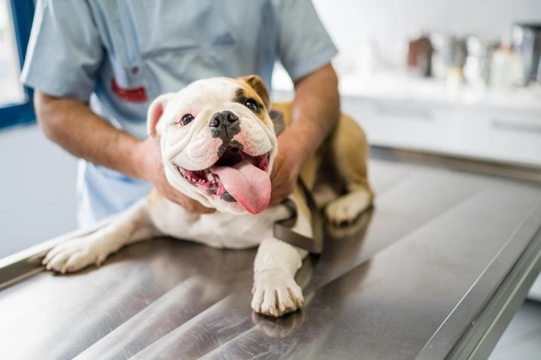
Can I take my dog to the vet and maintain social distancing?
Whether your dog simply needs their booster shots or another dose of a flea or worming treatment or if they’re ill, injured, or in need of urgent care, vets up and down the UK are doing their very best to achieve the delicate balance between providing essential healthcare to pets, and keeping themselves, their staff, and their other customers safe.
This means that how things work at the vet, how your dog can see a vet during coronavirus restrictions, and the logistics of veterinary appointments under the threat of Covid 19 are all going to be rather different to normal.
Self-isolation, a phrase that had little to no meaning to most of us a month ago, is now the topic on everyone’s lips, as those who have or may be carrying coronavirus are urged to avoid spreading it, and those most vulnerable to the condition seek to protect themselves as far as possible.
Even for those who are not self-isolating and that are currently well, social distancing is strongly advised. People taking this advice seriously and practicing it is likely to be integral to slowing the spread of coronavirus so that the pressure on the NHS evens out and increases the chances of as many people as possible being able to receive the vital treatment they need.
However, with all of this said, the needs of our pets aren’t suspended in the face of our own pandemic, and dogs still need food, walks and veterinary care; and the latter is something that is concerning many dog owners in terms of how to make a trip to the vet without increasing the risk of their own exposure to coronavirus.
If your dog needs essential care or in an emergency, you might not even be thinking about the usual social distancing protocols you’re trying to follow, but fortunately, your vet is; so, can you go to the vet and maintain the principles of social distancing? This article will tell you. Read on to learn more.
What is social distancing?
Social distancing is the practice of reducing contact with and proximity to other people, in order to reduce the chances of transmitting coronavirus and to slow the spread of the condition.
As an airborne virus, you cannot prevent yourself breathing it in or passing it from a surface you touch to yourself if exposed to it; but you can take steps to limit exposure, and reduce your chances of coming into contact with coronavirus in the first place.
Social distancing is important, both to prevent or delay individuals from contracting coronavirus and becoming sick themselves, and to ensure that their own exposure to it, even if they remain healthy, doesn’t place someone else in a vulnerable group at risk.
It means avoiding physical contact with others (like hugging or shaking hands) and avoiding coming too close to other people in general. It also means practicing excellent hygiene protocols and avoiding things like touching your face, and also washing and sanitising your hands frequently.
Can you go to the vet and maintain social distance?
When you visit the vet, you will usually be in close proximity to the vet and potentially other veterinary staff while your dog is examined. And so this is one type of proximity you cannot avoid; and if you, or anyone in your household, are showing symptoms of coronavirus or you have any reason to think you have been exposed, you should not go to the vet and instead arrange for someone else to take your dog.
However, most vets have suspended use of the waiting room and are keeping pet owners separate when waiting to be called in, and so you should not need to be in close contact to other members of the public when you go to the vet.
Your vet, and their clinic staff, will be operating under rigorous hygiene protocols at all times during the coronavirus threat, and these are of course experienced professionals who are not only just starting up their own steep learning curve in this respect like most people! They are qualified experts, whose day to day work involves preventing infection and the spread of contagious conditions both between pets, and for zoonotic conditions, between pets and people.
You can still maintain the other key principles of social distancing at the vets, like washing or sanitising your hands frequently, avoiding touching your face, and avoiding contact with others.
Some vets may offer phone consults or video consults instead at this time, which may help people to avoid the need for a physical visit entirely.
Will going to the vet increase my risk of catching coronavirus?
Any situation that involves venturing outside of your home and interacting with or coming closer to others raises the risk of you picking up coronavirus, and there is no getting away from this fact; and as an airborne virus, it is hard to avoid if you are in such situations and someone else is infected or carrying the condition.
This means that going to the vet comes with risk too; but also, vets and clinic staff are also medical professionals, who are well versed in excellent hygiene protocols and avoiding disease transmission under normal situations, so be assured that in today’s very not-normal times, they will be even more vigilant than normal.
Taking your dog to the vet does mean you risk exposure you might not have if you stayed at home; but the risk is likely to be far lower than, say, a simple interaction in the local shop, as long as the general public in turn avoids exposing others if they know or suspect they may be sick.



